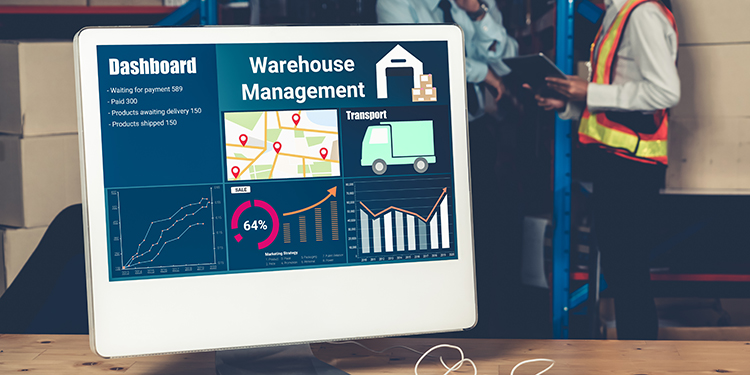Warehouse Software: Discerning The Differences Between WMS, WCS And WES

Not so long ago, the softwares that governed the operation of warehouses, distribution centers, and fulfillment centers were fairly delineated in their functions, with each handling a different aspect of a facility such as inventory, equipment, or employees. Today, however, those differences are far less distinct, and that can make it challenging for an organization trying to select the optimal solution for its needs among the choices of a warehouse management system (WMS), warehouse control system (WCS), or warehouse execution system (WES). The topic is explored in “Blurred Lines: WMS vs. WCS vs. WES,” published in DC Velocity, a member of MHI’s Solutions Community.
The most mature solution of the three, WMS, has been in use to control movement and storage of materials within warehouses for more than four decades. WCS, which manages the material handling machines and equipment deployed in a facility, connects automation equipment functions to the directions from the WMS. The latest entry to the software party is WES, which — depending on the vendor — sometimes incorporates aspects of both WMS and WCS.
To assist those in the process of assessing and selecting the optimal solution for a given operation, the article presents four acquisition scenarios and recommendations.
- Purchasing a new WMS and material handling equipment simultaneously. As the capabilities of homegrown or existing WMS installations begin to be outpaced by the shifting demands of current consumer buying habits, many operations are looking for both better functionality and expanded capabilities that can be attained with an overarching system upgrade. Consider acquiring a WCS or WES from the material handling solution provider for single-point project management. However, if the WCS or WES lack desired functions, consider acquiring a separate WMS that does and integrating it with the other software for optimal results.
- Purchasing new material handling equipment and a WCS, but not a WMS. Operations replacing material handling systems but keeping their current WMS intact might benefit from adding a WES that can address functionality gaps in the existing software. It is still advisable to purchase both WES and the equipment from the same supplier.
- Replacing an existing WMS. Operations seeking to solely replace their WMS solution while retaining their current material handling equipment and WCS/WES should inquire as to whether their existing software can be modified to handle nontraditional functions (such as receiving, putaway, cycle-counting, and picking on handheld devices). Utilizing standard, pre-programmed modules to accomplish this, if available, would be optimal; having custom code developed would not, as the resulting system would become difficult to subsequently upgrade. If a modular approach is not an option, consider purchasing an overarching WMS specifically built and designed to manage end-to-end processes.
- Seeking software to better manage existing material handling equipment without replacing an existing WMS. If a company has both a WMS and some form of WCS currently in place, it may wish to add a WES to improve control over its material handling equipment. To accomplish this, consider multiple WES options from different solutions providers, either connected to the original equipment or not. This approach layers software over the existing equipment, resulting in newer, better functionality without having to replace current material handling systems.
Finally, when assessing the options, first develop a list of functional requirements to review with potential WMS, WCS and WES solutions providers. Evaluate where existing systems are falling short, capabilities that are lacking, and current stability issues. Then, work with the suppliers to determine how their software offerings might best address those needs prior to making a decision.
Looking for additional details? The full article is available here.



